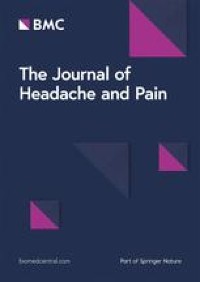JAMA Intern Med. 2021 Apr 26. doi: 10.1001/jamainternmed.2021.1408. Online ahead of print.
ABSTRACT
IMPORTANCE: Diagnostic yield of upper gastrointestinal (GI) tract endoscopy for uninvestigated dyspepsia is low, and its clinical implications are limited. There is an unmet need for better strategies to reduce the volume of upper GI tract endoscopic procedures for dyspepsia.
OBJECTIVE: To study the effectiveness of a web-based educational intervention as a tool to reduce upper GI tract endoscopy in uninvestigated dyspepsia.
DESIGN, SETTING, AND PARTICIPANTS: This open-label, multicenter, randomized clinical trial enrolled participants between November 1, 2017, and March 31, 2019, with follow-up 52 weeks after randomization, at 4 teaching hospitals in the Netherlands. Participants included patients with uninvestigated dyspeptic symptoms who were referred for upper GI tract endoscopy by their general health care clinician without pri or consultation of a gastroenterologist. A total of 119 patients, aged 18 to 69 years, were included. Patients were excluded if any of the following red flag symptoms were present: (indirect) signs of upper GI tract hemorrhage (hematemesis, melena, hematochezia, or anemia), unintentional weight loss of 5% or higher of normal body weight during a period of 6 to 12 months, persistent vomiting, dysphagia, or jaundice.
INTERVENTIONS: Patients were randomly assigned (1:1) to education (intervention) or upper GI tract endoscopy (control). Education consisted of a self-managed web-based educational intervention, containing information on gastric function, dyspepsia, and upper GI tract endoscopy.
MAIN OUTCOMES AND MEASURES: Difference in the proportion of upper GI tract endoscopy procedures between those who received access to the web-based educational intervention and those who did not at 12 weeks and 52 weeks after randomization, analyzed in the intention-to-treat population. Secondary outcomes included quality of life (Nepean Dyspepsia Index) and symptom severity (Patient Assessment of Gastrointestinal Disorders Symptom Severity Index) measured at baseline and 12 weeks.
RESULTS: Of 119 patients included (median age, 48 years [interquartile range, 37-56 years]; 48 men [40%]), 62 were randomized to web-based education (intervention) and 57 to upper GI tract endoscopy (control). Significantly fewer patients compared with controls underwent upper GI tract endoscopy after using the web-based educational intervention: 24 (39%) vs 47 (82%) (relative risk, 0.46; 95% CI, 0.33-0.64; P < .001). Symptom severity and quality of life improved equivalently in both groups. One additional patient in the intervention group required upper GI tract endoscopy during follow-up.
CONCLUSIONS AND RELEVANCE: Findings of this study indicate that web-based patient education is an effective tool to decrease the need for upper GI tract endoscopy in uninvestigated dysp epsia.
TRIAL REGISTRATION: ClinicalTrials.gov Identifier: NCT03205319.
PMID:33900373 | DOI:10.1001/jamainternmed.2021.1408








